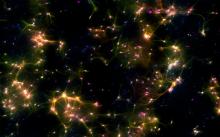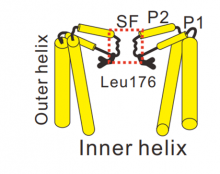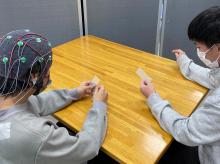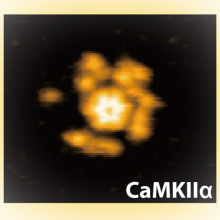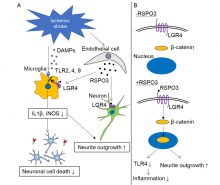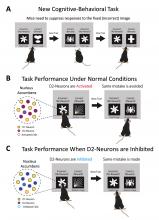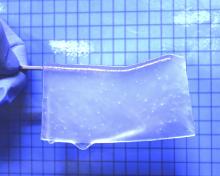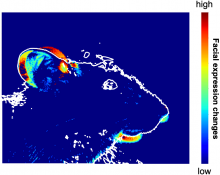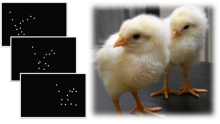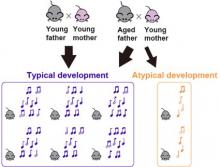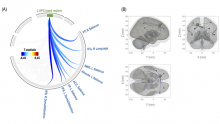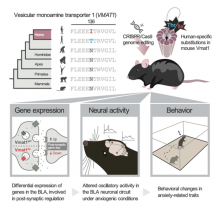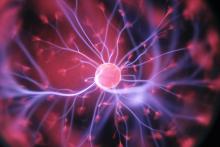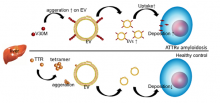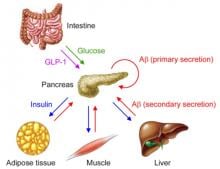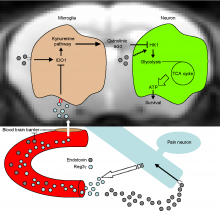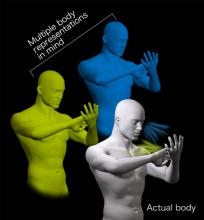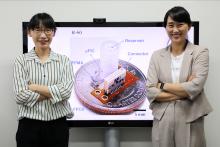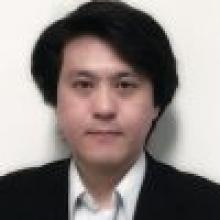Biology Neuroscience
News
11 Apr 2024
Researchers from the Institute of Industrial Science, The University of Tokyo, find that providing lab-grown ‘cerebral organoids’ with connections similar to those in real brains enhances their development and activity
15 Jan 2024
Unleashing stem cells from dog urine, Electronic Tongue, Tapping into human motion energy, How neurons network, and A radical use for plastic bags. Plus Communicating science two decades on. Read all in the latest Editor's Choice.
26 Dec 2023
Researchers from Osaka University and Shenzhen Bay Laboratory found that neuronal activity induces gene expression at sites of acetylation by promoting the emergence of cAMP response element binding protein (CREB), CREB binding protein (CBP), and RNA polymerase II. These proteins are targeted to the appropriate sites by CBP-mediated histone acetylation at activity-dependent gene loci.
05 Sep 2023
DishBrain reveals how human neurons work together to process information. Living model of brain could give insights into the mechanisms of how we understand and experience the world.
18 Aug 2023
Researchers at Kanazawa University report in Nature Communications how calcium ions can block sodium ion channels located in cell membranes. Structural analysis and computer simulations made it possible to identify where and why calcium ions get stuck.
04 Aug 2023
A research team from the Graduate School of Rehabilitation Science at Osaka Metropolitan University investigated the electrophysiological benefits of working in the presence of others from the perspectives of brain and autonomic nervous system activity. The researchers found that parasympathetic activity—which indicates relaxation—was significantly higher when two individuals were working separately than when one individual was working alone. This suggests that arranging the former condition in occupational therapy for individuals with high levels of tension or anxiety in clinical settings may potentially help alleviate these feelings.
05 Jul 2023
Researchers at Kanazawa University report in Science Advances high-speed atomic force microscopy experiments that show the structural and chemical changes in an enzyme thought to play a vital role in modulating the strength of neural connections.
11 May 2023
Researchers from Osaka University identified a new protein, R-spondin 3 (RSPO3), that has beneficial effects after ischemic stroke in mice. Specifically, RSPO3 activates the protein LGR4 to trigger a cascade of cellular reactions that decreases inflammation and stimulates the growth of neuronal extensions. Moreover, administrating RSPO3 to mice one day after stroke improved recovery of sensory and motor functions. These findings provide a new target for developing treatments to improve recovery after ischemic stroke.
25 Apr 2023
The Nobel prize winning physicist Niels Bohr once said, “An expert is a (person) that has made all the mistakes that can be made in a narrow field.” This idea that to master a skill we must learn from our mistakes and avoid making them in future has long been recognized; however, the brain mechanisms and pathways that control this ability have been poorly understood.
We revealed a specific brain pathway that allows us to identify and learn from our mistakes to guide better decision-making in future.
Our work is an important step towards understanding how the brain controls our daily choices and behavior. The identification of these cells as ‘mistake signalers’ may also help to guide new treatments for mental health conditions associated with impaired decision-making ability.
24 Feb 2023
Synthetic hydrogels were shown to provide an effective scaffold for neuronal tissue growth in areas of brain damage, providing a possible approach for brain tissue reconstruction.
28 Dec 2022
New insights into the opposing actions of serotonin-producing nerve fibres in mice could lead to drugs for treating addictions and major depression.
18 Nov 2022
Exploring virtual human-agent relationships, A fly protein gives clue for human cancers, Rare earth elements formed in neutron star mergers 💥, One-stop process for hydrogen production. Read all in the November's Editor's Choice plus Upcoming event K4DM KNOWLEDGE MARKETPLACE – Bangkok 2022: Exchanging Ideas for a Democratic Myanmar.
18 Nov 2022
Disturbed transmission via nicotinic acetylcholine receptors in chick fetuses impairs the hatchlings’ preference for animate objects—similar to what is seen in autism spectrum disorder in humans.
25 Oct 2022
Small neighboring galaxy filled with dark matter detected with gamma rays, How a virus induces heart inflammation, Shedding light on the happy hormone, Microfossils may hold key evolution clues. Read all in the October's Editor's Choice plus Upcoming event KNOWLEDGE MARKETPLACE – Bangkok 2022: Exchanging of ideas for a Democratic Myanmar.
20 Oct 2022
New insights into the role of a protein in the nerve cells of flies could help unravel the role of a related human protein in common cancers.
22 Sep 2022
Researchers led by Osaka University developed a novel fluorescent sensor to detect and monitor levels of the neuropeptide oxytocin, also known as the “happy hormone.” The OT sensor facilitated the successful measurement of OT dynamics in the brains of living animals and may serve as a foundation for the development of therapeutics for the treatment of neurological disorders such as autism and schizophrenia.
13 Sep 2022
The Memorandum of Understanding signed between The Ngee Ann Kongsi and Duke-NUS Medical School emphasises the need for more research as treatment and prevention options are currently limited for conditions such as Parkinson’s disease.
13 Sep 2022
Research shows that natural catastrophes may trigger or exacerbate attacks of incapacitating migraine in disaster victims.
23 Aug 2022
A baby’s cry is a form of communication used to attract attention from adult caregivers, and every baby cries in a similar but distinct way. An international research team has studied the vocal behavior of baby mice, called pups, to determine how the age of the father affects the pups’ vocal communication and body weight development. Their study will help them better understand vocal development in human babies.
11 Aug 2022
Human brains learn patterns over time and we don’t even realize it. New insight into how this works could improve learning and other cognitive processes.
05 Aug 2022
New research using genome editing technology has allowed scientists to create a model and assess a gene mutation associated with neuropsychiatric disorders in humans. The study has revealed how the mutation functions in the brain and affects anxiety and sociality.
11 Jul 2022
A novel molecular pathway involving cell signalling proteins in the brain may explain how stress affects neuropsychiatric lupus with diffuse neuropsychological manifestations.
27 Apr 2022
Hokkaido University researchers have shown how chronic pain leads to maladaptive anxiety in mice, with implications for treatment of chronic pain-related psychiatric disorders in humans.
12 Apr 2022
Researchers at Kanazawa University elucidate in Frontiers in Molecular Biosciences how small biocontainers enclosed by membranes are involved in a disease called ATTRv amyloidosis.
15 Mar 2022
A research group has revealed that amyloid-β (Aβ) detected in blood is secreted from peripheral tissues (pancreas, adipose tissue, skeletal muscle, liver, etc.) that are sensitive to glucose and insulin. Also, that Aβ secreted from peripheral tissues acts as a regulator on pancreatic β-cells to suppress insulin secretion. The results of this study indicate that blood Aβ levels fluctuate significantly with diet, and special care should be taken when using blood samples as a diagnostic marker for Alzheimer's disease, such as taking blood samples during fasting.
08 Mar 2022
A research team led by the National Institute for Physiological Sciences and joined by Hokkaido University explored the role of pain neurons in the regulation of endotoxic death. They found that peptide named Reg3γ acts as a pain neuron-enriched brain-targeted hormone that protects the host from endotoxic death.
08 Mar 2022
Scientists develop a method to genetically label neurons with a single gene of interest in mice by combining the anterograde transsynaptic spread of adeno-associated virus serotype 1 (AAV1) with intersectional gene expression. In two distinct circuits: the retina/primary visual cortex to the superior colliculus and the bilateral motor cortex to the dorsal striatum, injections of AAV1 expressing either Cre or Flpo recombinases and the Cre/Flpo double-dependent AAV into two upstream regions and the downstream region, respectively, were used to label postsynaptic neurons receiving inputs from the two upstream regions.
21 Jan 2022
Our brain maps out our body to facilitate accurate motor control. For a century, the body map has been thought to have applied to all types of motor actions. Now, a research group has revealed that the body relies on multiple maps based on the choice of motor system.
01 Oct 2021
Novel design of brain chip implant allows for measuring neuronal activity while simultaneously delivering drugs to the implant site
Events
Sorry, nothing coming up for this discipline
Researchers
Assistant Professor Izumi Fukunaga grew up in Japan and Malaysia and went to London to study neuroscience. Her research focuses on how sensory circuits in the brain function.
Takami Tomiyama is currently an Associate Professor at the Graduate School of Medicine of Osaka City University.
Myungin Baek is currently an Assistant Professor at Daegu Gyeongbuk Institute of Science and Technology (DGIST).
Professor Ken's current research mainly focuses on the causes and treatments of neurodegenerative diseases. His lab has developed a nanomaterial-based technology for harvesting autologous neural stem cells from the brain of living subjects.
Greg Seong-Bae Suh is an associate professor in the Department of Biological Sciences, Korea Advanced Institute of Science and Technology (KAIST).
The Neuroscience Research Group is a multi-disciplinary team investigating the nervous system. They are focusing on animal behavioral models for memory in the laboratory. They are studying the effects of food, such as Habbatus Sauda/Black cumin (Nigella sativa) and honey, on brain microstructures and memory. They also compare Islamic and neuroscience perspectives on issues like learning and sleep for children with and without autism spectrum disorders.
Solving the mystery of sleep ~Developing new intervention methods for healthy slumber~
Takeshi Sakurai is a professor at the International Institute for Integrative Sleep Medicine, University of Tsukuba, Japan.
We investigate the brain through visual functions to apply the knowledge to human engineering and image engineering.
Prof. Dr. Francisco J. Barrantes is the Head of the Laboratory of Molecular Neurobiology, BIOMED UCA-CONICET, Buenos
Aires, Argentina.
Masanori Shimono is an associate professor at Kyoto University Graduate School of Medicine.
Giants in history
David T. Wong (born 1936) is a Hong Kong-born American neuroscientist who is best known for discovering the antidepressant drug fluoxetine, better known as Prozac.






